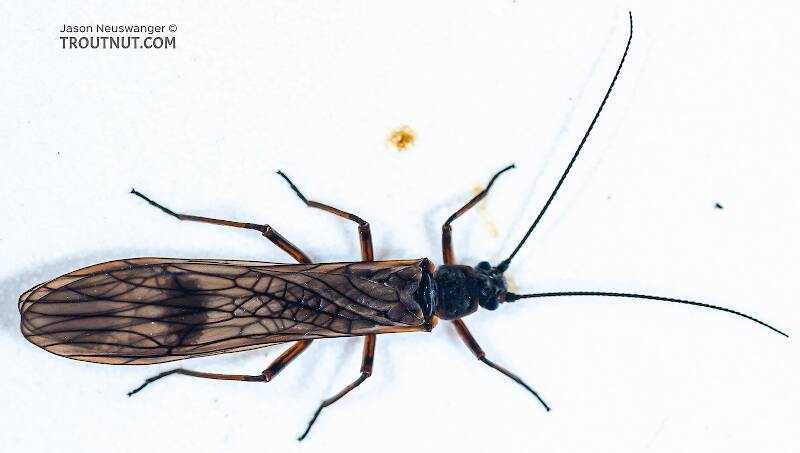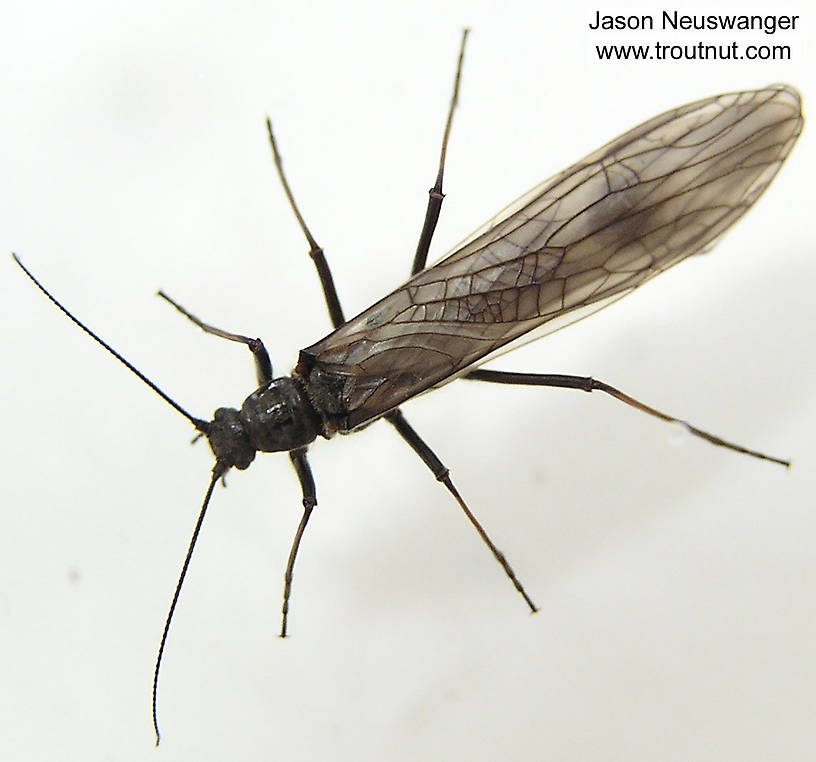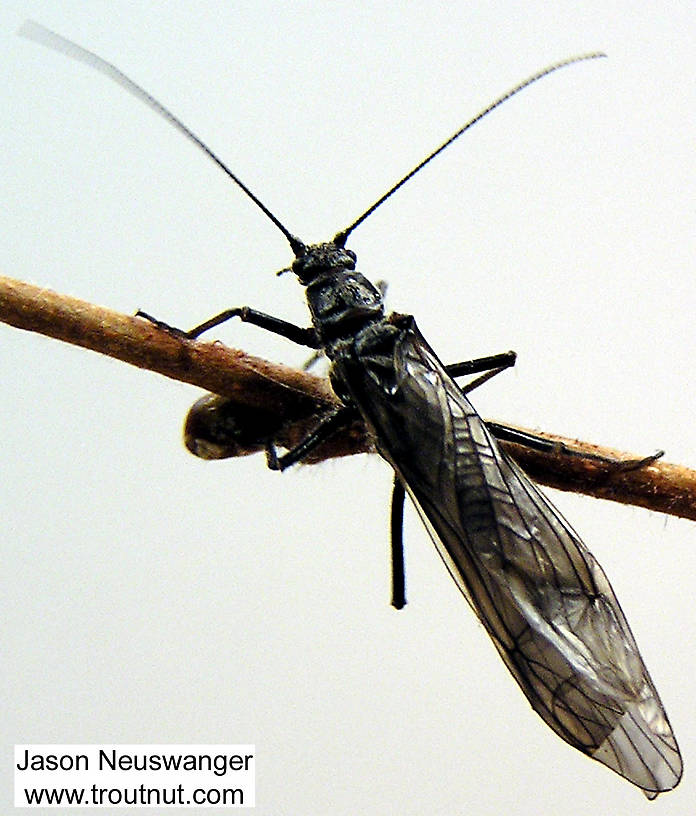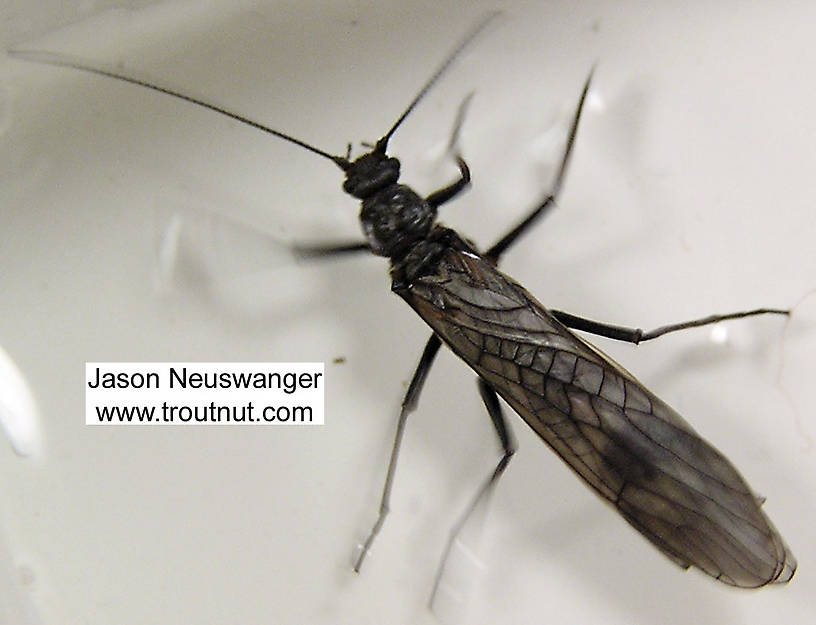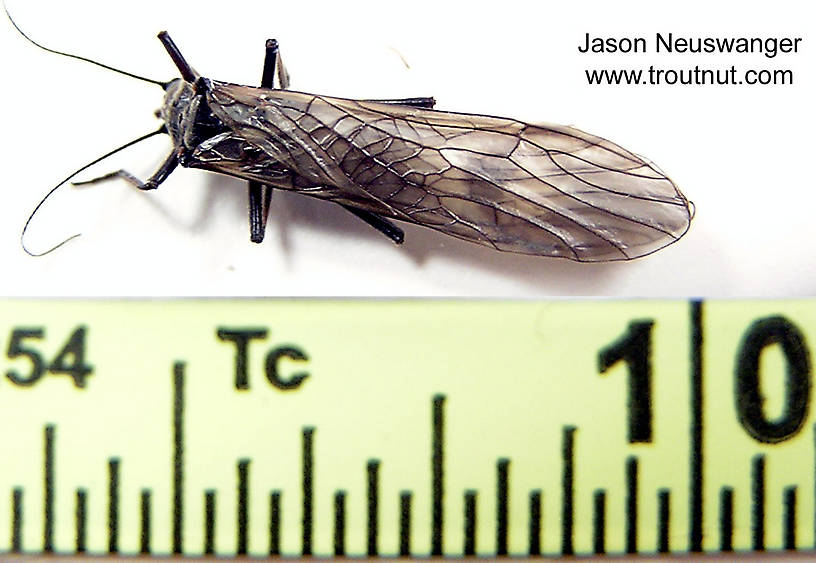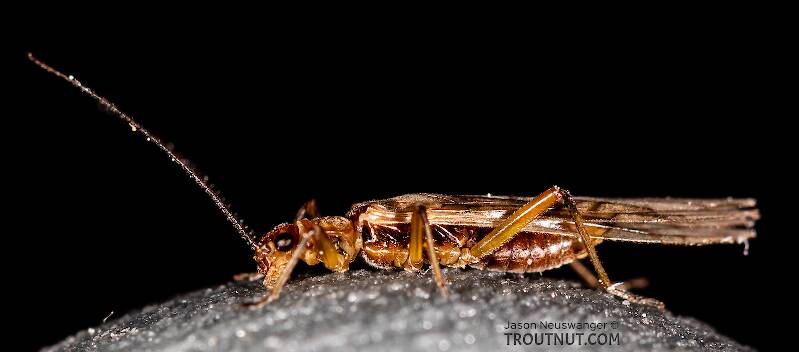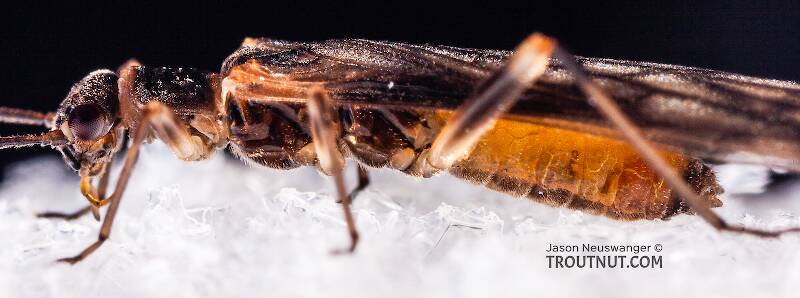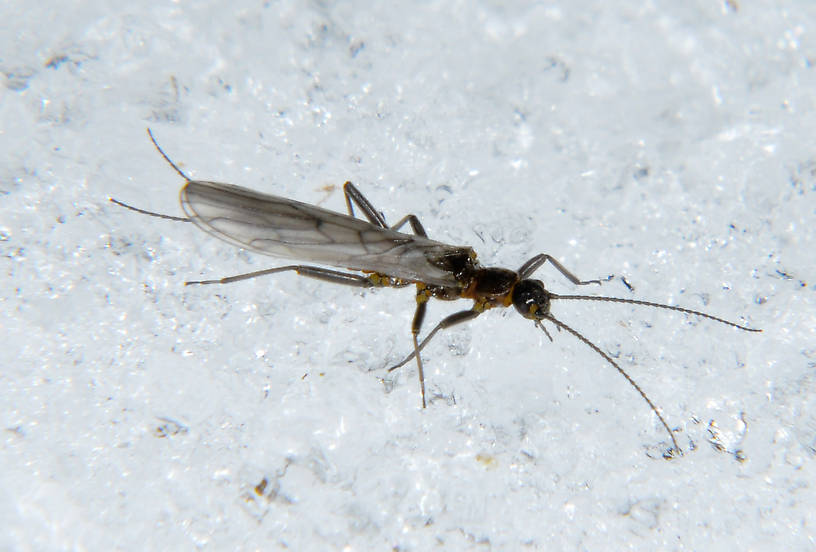
Hex Mayflies
Hexagenia limbata
The famous nocturnal Hex hatch of the Midwest (and a few other lucky locations) stirs to the surface mythically large brown trout that only touch streamers for the rest of the year.
Featured on the forum

Troutnut is a project started in 2003 by salmonid ecologist Jason "Troutnut" Neuswanger to help anglers and
fly tyers unabashedly embrace the entomological side of the sport. Learn more about Troutnut or
support the project for an enhanced experience here.
Identification: Key to Families of Stonefly Adults, Couplet 2
Identification: Key to Families of Stonefly Adults, Couplet 2
Error: Tried to access a key that isn't live.
Adapted from Merritt R.W., Cummins, K.W., and Berg, M.B. (2019)
This couplet refers figures (usually designated 'sf') from this source.
You will need the source (make sure to get the same edition!) to see them.
This couplet refers figures (usually designated 'sf') from this source.
You will need the source (make sure to get the same edition!) to see them.
| Option 1 | Option 2 |
|---|---|
| Second (middle) tarsal segment about as long as first (basal) segment (sf 16.178) | Second tarsal segment much shorter than first (sf 16.176) |
| Gill scar present (sf 16.179) or absent on inner coxal surface | Gill scar absent from inner coxal surface |
| Remaining families: Capniidae, Leuctridae, and Nemouridae | |
5 Example Specimens | 5 Example Specimens |
| Taeniopterygidae | Go to Couplet 3 |
Adapted from Merritt R.W., Cummins, K.W., and Berg, M.B. (2019)
The current couplet is highlighted with darker colors and a icon, and couplets leading to this point have a icon.
Leads to Couplet 2:
- First (basal) tarsal segment at least as long as the third (apical) tarsal segment
- Tarsi completely sclerotized on venter
Couplet 2
Leads to Couplet 5:
- First tarsal segment much shorter than third tarsal segment
- Mid and basal tarsal segments with well-developed ventral membraneous pads
Couplet 5
Couplet 2 (You are here)
Leads to Taeniopterygidae:
- Second (middle) tarsal segment about as long as first (basal) segment (sf 16.178)
- Gill scar present (sf 16.179) or absent on inner coxal surface
Leads to Couplet 3:
- Second tarsal segment much shorter than first (sf 16.176)
- Gill scar absent from inner coxal surface
Couplet 3
Leads to Capniidae:
- Tails multisegmented (sf 16.180)
- Second anal vein of forewing simple and unforked (sf 16.183)
- Usually 1 or 2 intercubital crossveins
Leads to Couplet 4:
- Tails 1-segmented (sf 16.182)
- Second anal vein of forewing forked (sf 18.183)
- Usually 5 or more intercubital crossveins
Couplet 4
Leads to Nemouridae:
- Apical segment of labial palpus circular and larger than preceding segment (sf 16.184)
- Wings lying relatively flat over the abdomen at rest
- Forewing often with an X-pattern of crossveins at cord (sf 16.183)
- Cervical gills sometimes present (sf 16.185)
Leads to Leuctridae:
- Apical segment of labial palpus similar to preceding segment (sf 16.186)
- Wings rolled around abdomen at rest, giving body a slender, needle-like appearance
- Forewings without an X-pattern of crossveins at cord (sf 16.187)
- Gills absent
Leads to Peltoperlidae:
- Ventroapical tibial spurs small and arranged in one or two rows (sf 16.188)
- Metathoracic sternacostal sutures, if present, arise from posterior corners of furcal pits
- Posterolateral angles of metasterna usually project behind coxae (sf 16.189)
- Two ocelli
Leads to Couplet 6:
- Two slightly enlarged ventroapical spurs occur on each tibia, each surrounded by subapical membraneous area (sf 16.190)
- Sternacostal sutures extend laterad of anterior corners of metathoracic furcal pits, often to margins of basisternum (sf 16.191), or sutures incomplete near furcal pits (sf 16.192)
- Posterolateral angles of metasternum not projecting (sf 16.192)
- Two or three ocelli
Couplet 6
Leads to Pteronarcyidae:
- Gill remnants conspicuous on thoracic sterna between coxae and on first 2 or 3 abdominal sterna (sf 16.193)
- Forewing anal region with two or more rows of crossveins (sf 16.194)
Leads to Couplet 7:
- Thoracic gill remnants, if present, restricted to area behind coxae (sf 16.195) and absent from basal abdominal sterna
- Forewing anal region with, at most, one row of crossveins
Couplet 7
Leads to Chloroperlidae:
- Lateral margins of pronotum not bent downward
- Second anal vein of forewing often forked between anal cell and wing margin (sf 16.196)
- Hind wing anal region usually with less than 5 longitudinal veins
- Body color variable but often green or yellow in life
- Apical maxillary palpal segment often much reduced in size relative to penultimate segment
- Gill remnants absent
Leads to Couplet 8:
- Lateral margins of pronotum usually bent sharply downward, partially covering sides of prothorax (sf 16.197)
- Second anal vein of forewing forked or unforked between anal cell and wing margin
- Hind wing anal region with 5 or more longitudinal veins
- Body color yellow, brown, or black
- Apical maxillary palpal segment not greatly reduced in size
- Gill remnants present or absent
Couplet 8
Leads to Perlidae:
- Metathoracic sternacostal sutures along posterior margin of basisternum not reaching furcal pits, and obscure arched grooves extend anterolad from furcal pits
- Cubitoanal crossvein of forewing usually touching, or very near anal cell
- Thorax (and sometimes paraprocts) often with branched gill remnants or ragged gill stubs (sf 16.195)
Leads to Perlodidae:
- Metathoracic sternacostal sutures extend laterad from anterior corners of furcal pits to margins of basisternum
- Cubitoanal crossvein of forewing often absent, or located on the cubitus beyond (distal of) the anal cell by a distance at least equal to the cubitoanal crossvein's own length
- Thorax and paraprocts without branched gill remnants but finger-like (or forked) gills sometimes occur on submentum, thorax, or sides of abdomen (sf 16.198)
Start a Discussion of this Couplet
References
- Merritt R.W., Cummins, K.W., and Berg, M.B. 2019. An Introduction to the Aquatic Insects of North America (Fifth Edition). Kendall/Hunt Publishing Company.



